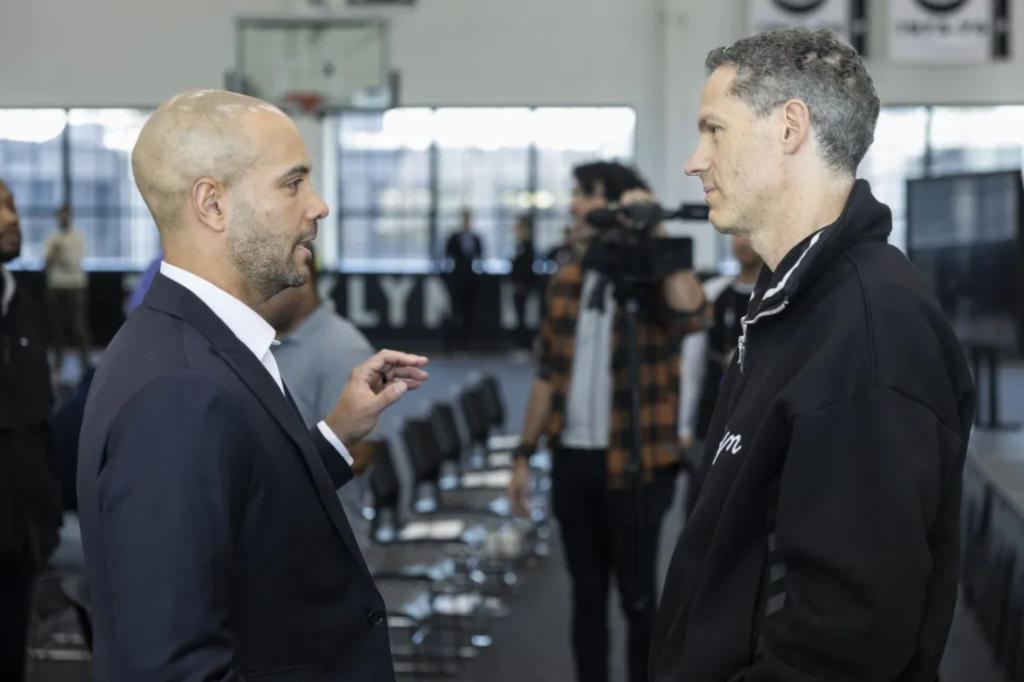A Strategic Vision Beyond the Court
The Brooklyn Nets find themselves at a crossroads familiar to many professional sports franchises: how do you maintain fan engagement and community connection during a rebuilding phase? While their sights are set on lottery picks and developing young talent, the organization is simultaneously making significant investments in their community infrastructure. The recent opening of the Brooklyn Basketball Training Center represents more than just a new facility—it’s a cornerstone of the Nets’ long-term strategy to cultivate lasting relationships with the next generation of basketball fans.
This dual approach of rebuilding both their roster and their community presence reflects a sophisticated understanding of modern sports marketing and fan development. In an era where professional teams compete not just with other sports franchises but with countless entertainment options, the Nets are betting that grassroots engagement will pay dividends far beyond any single season’s performance.
The Challenge of Rebuilding in Professional Sports
Rebuilding phases in professional basketball present unique challenges that extend far beyond the technical aspects of roster construction. When teams openly acknowledge that their primary goal is securing high draft picks through strategic losing, they face an immediate marketing dilemma: how do you sell hope to fans when your short-term strategy involves accepting defeat?
The Nets’ situation is particularly complex given their recent history. After years of ambitious moves, including the blockbuster trades that brought Kevin Durant and Kyrie Irving to Brooklyn, the franchise is now embracing a more patient, development-focused approach. This transition requires careful management of fan expectations and community relationships.
The “Process” Precedent
The Philadelphia 76ers famously navigated similar waters with “The Process,” their multi-year rebuilding strategy that prioritized draft picks over immediate competitiveness. While ultimately successful in building a competitive team, the 76ers learned valuable lessons about maintaining fan engagement during lean years. The Nets appear to be applying these lessons, understanding that transparency about rebuilding goals, combined with meaningful community investment, can help maintain fan loyalty during difficult seasons.
Community Investment as Long-Term Strategy
The Brooklyn Basketball Training Center represents a tangible commitment to the community that transcends win-loss records. This type of facility serves multiple strategic purposes that extend far beyond immediate revenue generation or fan appeasement.
Creating Basketball Infrastructure
By establishing high-quality training facilities in Brooklyn, the Nets are contributing to the local basketball ecosystem. This infrastructure benefits not just their own players but also local youth programs, amateur leagues, and basketball development initiatives. The facility becomes a hub for basketball activity that keeps the Nets brand visible and relevant even when the team’s on-court performance might not be generating headlines.
Developing Future Talent Pipelines
Investment in youth basketball development creates potential long-term benefits for player recruitment and development. While the immediate impact may be minimal, over time, these programs can help identify and develop local talent, potentially creating pathways for Brooklyn-area players to join the organization. This approach has proven successful for teams like the San Antonio Spurs, who have built strong relationships with international basketball development programs.
The Psychology of Generational Fandom
The concept of “generational fandom” that the Nets are pursuing reflects deep understanding of how sports allegiances form and persist. Research in sports psychology suggests that fan loyalty typically develops during childhood and adolescence, often influenced by positive early experiences with teams and players.
Building Emotional Connections
Traditional marketing approaches focus on immediate results—ticket sales, merchandise purchases, and television viewership. However, generational fandom requires a different approach, one that prioritizes emotional connection and community integration over short-term metrics. The training center initiative allows young fans to interact with the Nets brand in meaningful ways that create lasting positive associations.
The Long View on Return Investment
While difficult to quantify, investments in youth engagement can yield returns spanning decades. Children who participate in Nets-sponsored programs today may become season ticket holders, corporate sponsors, or community advocates for the franchise in 20-30 years. This patient approach to fan development requires organizational commitment and vision that extends beyond typical business planning cycles.
Modern Challenges in Fan Engagement
The Nets’ community-focused approach addresses several contemporary challenges facing professional sports franchises:
Competition for Attention
Today’s young fans have unprecedented entertainment options. Video games, streaming services, social media, and other activities compete directly with sports for time and attention. By creating interactive, participatory experiences through training centers and development programs, teams can offer something that passive entertainment cannot: direct involvement and skill development.
Authenticity and Purpose
Younger consumers, particularly millennials and Generation Z, increasingly value authenticity and social purpose in their brand relationships. Organizations that demonstrate genuine commitment to community development and youth empowerment can build stronger, more resilient fan relationships than those relying solely on on-court success.
Measuring Success Beyond Wins and Losses
The success of initiatives like the Brooklyn Basketball Training Center cannot be measured using traditional sports metrics. Instead, organizations must develop new frameworks for evaluating community impact and long-term fan development.
Community Engagement Metrics
Meaningful measurement might include program participation rates, community partnership development, local media coverage of community initiatives, and long-term tracking of program alumni engagement with the franchise. These metrics require patience and sophisticated data collection but provide valuable insights into the true impact of community investment.
Brand Perception and Market Position
Community investment can significantly impact how franchises are perceived by potential free agents, corporate partners, and the broader basketball community. Teams known for strong community engagement often find advantages in player recruitment, as athletes increasingly consider organizational culture and community impact when making career decisions.
Key Takeaways
- Community investment during rebuilding phases can help maintain fan engagement when on-court performance is limited
- Generational fandom development requires long-term thinking and sustained community presence beyond traditional marketing
- Youth-focused facilities and programs create lasting positive associations that can yield returns spanning decades
- Modern fan engagement must compete with diverse entertainment options by offering participatory, skill-building experiences
- Success measurement for community initiatives requires new metrics beyond traditional sports performance indicators
- Authentic community commitment can provide competitive advantages in player recruitment and corporate partnerships
Looking Forward
The Brooklyn Nets’ approach to combining roster rebuilding with community investment represents an evolution in how professional sports franchises think about fan development and organizational sustainability. While the immediate future may bring challenging seasons and lottery selections, the foundation being built through initiatives like the Brooklyn Basketball Training Center could prove instrumental in the franchise’s long-term success.
As other teams observe this strategy, we may see broader adoption of community-first approaches to fan development, particularly among franchises in rebuilding phases. The Nets are essentially conducting a real-world experiment in whether meaningful community investment can sustain and grow fan loyalty independent of short-term competitive success.

Born and raised amidst the hustle and bustle of the Big Apple, I’ve witnessed the city’s many exciting phases. When I’m not exploring the city or penning down my thoughts, you can find me sipping on a cup of coffee at my favorite local café, playing chess or planning my next trip. For the last twelve years, I’ve been living in South Williamsburg with my partner Berenike.

